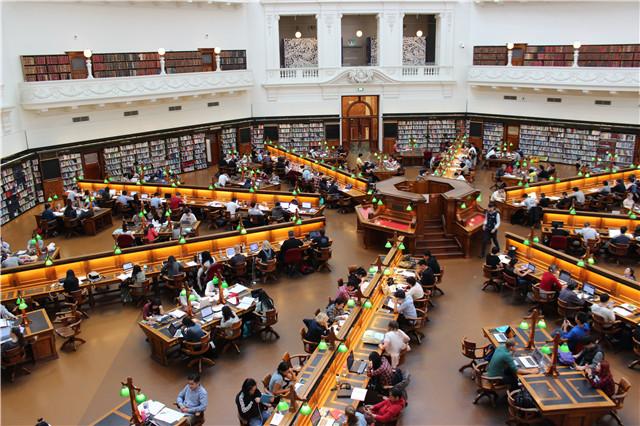托福写作素材之世界名人简介
Biography of Homer
Homer is the man who, according to legend, wrote the two great epics of Greek history: the Iliad (the tale of the Trojan War) and the Odyssey (about the travels of Odysseus). Both books are considered landmarks in human literature and Homer is therefore often cited as the starting point of Western literary and historical tradition. The details of Homer's life are a mystery; some scholars believe that no such man ever existed, and that the works credited to him were actually told and gathered by many people over many centuries. Other stories give various birthplaces and ages for Homer and suggest he was a wandering poet or minstrel. Homer is usually said to have been blind, a point on which nearly all the legends agree.

Biography of Aristotle
Aristotle is one of the "big three" in ancient Greek philosophy, along with Plato and Socrates. (Socrates taught Plato, who in turn instructed Aristotle.) Aristotle spent nearly 20 years at Plato's Academy, first as a student and then as a teacher. After Plato's death he travelled widely and educated a famous pupil, Alexander the Great, the Macedonian who nearly conquered the world. Later Aristotle began his own school in Athens, known as the Lyceum. Aristotle is known for his carefully detailed observations about nature and the physical world, which laid the groundwork for the modern study of biology. Among his works are the texts Physics, Metaphysics, Rhetoric and Ethics. Biography of Archimedes
Archmedes (ar-ke-me'-deez), a renowned mathematician. His astonishing skill in mechanics was such that some of the greatest real triumphs of antiquity may be ascribed to him. His inventions amazed his contemporaries: the lifting of weights by means of pulleys and the endless screw are among them. A Roman historian celebrates the warlike engines produced by the skill of Archimedes. His mind ever fruitful of extraordinary resources, when Syracuse was besieged by Marcellus, he constructed a burning-glass on a scale of such magnitude that by means of it the enemy's fleet was fired. Eventually, the city being taken, he was found among the slain.
Biography of Dante
An exiled and wandering figure during his writing lifetime, Dante is now considered Italy's greatest poet -- so much a literary giant that he is generally known by his first name alone. The Divine Comedy, by far his most famous work, is the story of a journey through Hell, Purgatory and finally Paradise. (The journey through Hell is often referred to independently as "Dante's Inferno.") In the poem the first two stages are guided by the Roman poet Virgil, and the final visit to Paradise is led by a woman named Beatrice -- a girl Dante met briefly when he was nine and whom he idolized the rest of his life. The Divine Comedy is the source of many famous classical images, inspiring works by William Blake and others, and is famous for its inscription on the gates of Hell: "All hope abandon, ye who enter here." Joan of Arc (1412-1431)
A hero of the Hundred Years War, Joan of Arc remains a French national hero six centuries later. As a teenager she heard voices from on high urging her to save France from English domination. Despite being a young woman, she was placed at the head of an army; she attacked the English and forced them to retreat from Orléans. Later she was captured by the English, tried for heresy, and burned at the stake. In 1920 she was canonized by the Catholic Church.
Christopher Columbus
Christopher Columbus was born in 1451 Calvi (Corsica), northwest of the island, 200km from Ajaccio. He was the oldest of five children. As a child, he helped his father as a weaver. He always liked the sea. Genoa was an important seaport. There is no doubt that as a child he caught rides on ships. He had little schooling but was a genius with the sea. His plan was not to prove that the world was flat, but it was to find a shortcut to the Spice Islands. He wanted to establish a city there for trade, seaports, and much more. When he grew into a man he was interested in sailing to Asia by going west. First he went to the king of Italy and presented his idea before him. Italy wasn't looking for a way to Asia, they were still recieving riches from their old trade routes. His three ships were the Santa Maria, the Nina, and the Pinta.
One-Tank Trip: Columbus, Ga.
Pensacola News Journal - FOUNDED/ESTABLISHED: 1828. HISTORY: This city, named for Christopher Columbus, is located on a bluff overlooking the Chattahoochee River. It is the third largest city in Georgia and the fourth largest metropolitan area in the state. Coca-Cola ...
Little League team has full support from Columbus
Philadelphia Enquirer - COLUMBUS, Ga. - Georgia schools students usually are allowed no more than five non-excused absences before they are considered truant. The boys of summer from Columbus who are still swinging away in the Little League World Series have been given the ...
City: Knights fall in Columbus
Toledo Blade - COLUMBUS - St. Francis de Sales outgained Columbus DeSales by 187 yards, but DeSales' special teams were superior in knocking off the Knights 24-21 last night in a season-opener. After Knights quarterback Matt Meinert hit Mike Jesionowski for a six ...
Leonardo da Vinci
Leonardo da Vinci is best remembered as the painter of the Mona Lisa (1503-1506) and The Last Supper (1495). But he's almost equally famous for his astonishing multiplicity of talents: he dabbled in architecture, sculpture, engineering, geology, hydraulics and the military arts, all with success, and in his spare time doodled parachutes and flying machines that resembled inventions of the 19th and 20th centuries. He made detailed drawings of human anatomy which are still highly regarded today. Leonardo also was quirky enough to write notebook entries in mirror (backwards) script, a trick which kept many of his observations from being widely known until decades after his death.
Nicolas Copernicus
Nicolas Copernicus was born into a well-to-do family, and after his father died in 1483 he was put under the guardianship of his uncle, a bishop of Warmia (Poland). He went to university in Krakow and spent a decade in Italy, studying law and mathematics. A canon of the cathedral at Frombork, Copernicus carried out administrative duties and, from his house, observed the stars and planets. For years he worked on his theory that the planets in our solar system revolved around the sun (Ptolemy of ancient Greece had explained that the universe was a closed system revolving around the earth, and the Catholic church concurred). Hesitant to publish his work for fear of being charged with heresy, Copernicus summarized it in 1530 and circulated it among Europe's scholars, where it was greeted with enthusiasm. His work, titled De revolutionibus orbium coelestium was finally published in 1543, apparently just a few weeks before he died
Socrates
Philosopher
Socrates is credited with laying the foundation for Western philosophical thought. His "Socratic Method" involved asking probing questions in a give-and-take which would eventually lead to the truth. Socrates's iconoclastic attitude didn't sit well with everyone, and at age 70 he was charged with heresy and corruption of local youth. Convicted, he carried out the death sentence by drinking hemlock, becoming one of history's earliest martyrs of conscience. Socrates's most famous pupil was Plato, who in turn instructed the philosopher Aristotle
Confucius
Philosopher
Also Known As: Kong Fu-Zi
Confucius was a teacher, scholar and minor political figure, whose commentary on Chinese literary classics developed into a pragmatic philosophy for daily life. Not strictly religious, his teachings were a utilitarian approach to social harmony and the moral obligations between individuals and social systems.
Biography of Michelangelo Buonarroti
Perhaps the greatest influence on western art in the last five centuries, Michelangelo was an Italian sculptor, architect, painter and poet in the period known as the High Renaissance. His great works were almost entirely in the service of the Catholic Church, and include a huge statue of the Biblical hero David (over 14 feet tall) in Florence, sculpted between 1501 and 1504, and the ceiling of the Sistine Chapel in Rome (commissioned by Pope Julius II), painted between 1508 and 1512. After 1519 Michelangelo was increasingly active in architecture; he designed the dome of St. Peter's Basilica, completed after his death. Along with contemporaries Leonardo da Vinci and Raphael, he is considered one of the great masters of European art.
Ferdinand Magellan
Explorer
Portuguese name: Fernao de Magalhaes
Magellan was born in Portugal, but it was under the Spanish flag that he sailed in 1519 with the intention of reaching the Spice Islands by sailing west around South America. After much hardship he succeeded in reaching and then sailing across the Pacific Ocean. Soon thereafter he was killed while trying to subdue the natives on what is now the island of Mactan in the Philippines. After still more hardships, one of his original five ships, Victoria, eventually made it back to Spain. Though Magellan didn't complete the entire circumnavigation, as the expedition's leader he is usually credited with being the first man to circle the globe
猜你喜欢
-
 怎么样积累托福写作素材呢?都有哪些好的方法呢?2020-07-13怎么样积累托福写作素材呢?其实我们平时写一般的英文作文的时候,基本上最大的障碍就是自己的词汇,就跟我们写语文作文一样,有一定的阅读量,在写东西的时候自然是有可写的,所以【 查看详情 】
怎么样积累托福写作素材呢?都有哪些好的方法呢?2020-07-13怎么样积累托福写作素材呢?其实我们平时写一般的英文作文的时候,基本上最大的障碍就是自己的词汇,就跟我们写语文作文一样,有一定的阅读量,在写东西的时候自然是有可写的,所以【 查看详情 】 -
 托福写作高分句式素材2020-07-19托福写作中有很多句式可以用,本文介绍托福写作高分句式,一起来看看吧!This issue has caused wide public concern 这个问题已经引起了广泛关注。【 查看详情 】
托福写作高分句式素材2020-07-19托福写作中有很多句式可以用,本文介绍托福写作高分句式,一起来看看吧!This issue has caused wide public concern 这个问题已经引起了广泛关注。【 查看详情 】 -
 托福写作综合作文模板2020-09-21今天培顿托福频道小编为大家整理了托福写作综合作文模板,供大家参考,以下是详细内容。 In the lecture,the speaker believes【 查看详情 】
托福写作综合作文模板2020-09-21今天培顿托福频道小编为大家整理了托福写作综合作文模板,供大家参考,以下是详细内容。 In the lecture,the speaker believes【 查看详情 】 -
 托福写作素材之世界名人简介2020-09-21Biography of Homer Homer is the man who, according to legend, wrote the two great epics of Greek history:【 查看详情 】
托福写作素材之世界名人简介2020-09-21Biography of Homer Homer is the man who, according to legend, wrote the two great epics of Greek history:【 查看详情 】 -
 如何进行托福写作?积累写作素材和模板很重要!2021-10-17如何进行托福写作?托福写作的时候,学生们容易出现一些问题,比如托福写作的时候没有思路,没有逻辑,想起一句写一句,这样是很容易偏【 查看详情 】
如何进行托福写作?积累写作素材和模板很重要!2021-10-17如何进行托福写作?托福写作的时候,学生们容易出现一些问题,比如托福写作的时候没有思路,没有逻辑,想起一句写一句,这样是很容易偏【 查看详情 】
热门阅读
随机阅读














